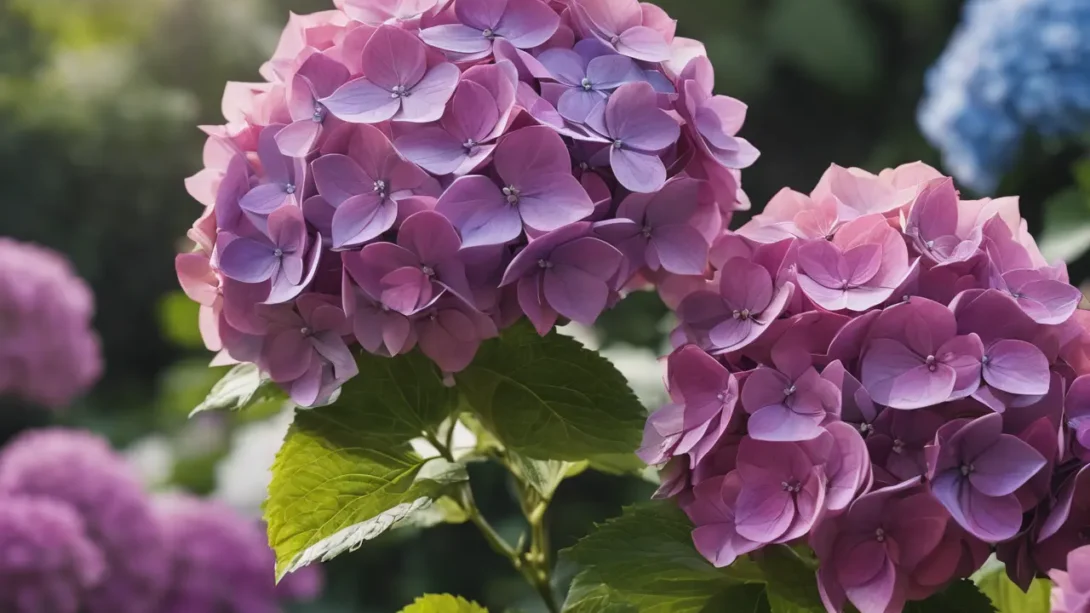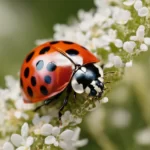Hydrangeas, with their lush foliage and large, vibrant blooms, are a centerpiece of many gardens and landscapes. These beloved plants offer a range of colors and shapes, making them versatile for various design aesthetics. A common question among gardeners and enthusiasts is: How long do hydrangea blooms last? This article explores the lifespan of hydrangea flowers, delving into the factors that influence their longevity and how to prolong their display.
Hydrangeas
Varieties of Hydrangeas
Hydrangeas come in several types, each with unique characteristics that affect their blooming patterns. The most common varieties include:
- Bigleaf Hydrangeas (Hydrangea macrophylla): Known for their large leaves and vibrant blue or pink flowers, depending on soil pH.
- Panicle Hydrangeas (Hydrangea paniculata): Characterized by their cone-shaped flower clusters, ranging from white to pink as they age.
- Smooth Hydrangeas (Hydrangea arborescens): Often featuring white, globe-shaped flower heads.
- Oakleaf Hydrangeas (Hydrangea quercifolia): Distinct for their oak-like leaves and white or pink flowers that fade to a beautiful bronze in fall.
Bloom Characteristics
Hydrangea blooms are not only admired for their size and beauty but also for their ability to change color based on soil conditions, particularly in Bigleaf varieties. The bloom time and duration can vary significantly among species and are influenced by environmental factors and care practices. Typically, hydrangeas begin to bloom in early summer and can continue into fall, with blooms lasting from several weeks to months.
Lifespan of Hydrangea Blooms
Average Bloom Duration
On average, hydrangea flowers can last on the plant for several weeks to a few months. The specific duration depends on the variety and external conditions. For instance, Bigleaf hydrangeas might boast flowers that persist in good condition for a month or more, while Panicle hydrangeas can have blooms that last from summer through fall, gradually changing color as they age.
Factors Influencing Bloom Longevity
Several factors play a crucial role in determining how long hydrangea blooms will last:
- Genetics: The inherent characteristics of the hydrangea variety affect bloom duration.
- Weather Conditions: Extreme weather, such as intense heat, frost, or heavy rain, can shorten bloom life.
- Care Practices: Adequate watering, fertilization, and disease prevention contribute to the longevity of flowers.
- Disease and Pests: Infestations and illness can significantly reduce the lifespan of blooms.
Enhancing Hydrangea Bloom Longevity
To maximize the display period of hydrangea blooms, gardeners can adopt specific practices focused on optimal planting conditions, diligent care, and protection from environmental stresses. Implementing these strategies not only extends the life of the blooms but also promotes overall plant health.
Optimal Planting Conditions
The foundation for long-lasting hydrangea blooms starts with the right planting location and soil conditions. Hydrangeas generally prefer locations that receive morning sun and afternoon shade, particularly in hotter climates. This balance ensures enough light for blooming while protecting plants from the stress of midday heat. The soil should be rich, well-draining, and slightly acidic to neutral for most hydrangeas, although Bigleaf varieties may require more specific pH adjustments to alter bloom color. Incorporating organic matter into the soil at planting time can improve soil structure and fertility, benefiting bloom production and longevity.
Proper Care and Maintenance
Consistent care is crucial for sustaining vibrant hydrangea blooms throughout their potential lifespan. Watering practices should ensure the soil remains moist but not waterlogged, as hydrangeas are particularly sensitive to drought. A mulch layer can help retain soil moisture and regulate temperature. Fertilizing hydrangeas in spring with a slow-release, balanced fertilizer encourages healthy growth and flowering. However, excessive nitrogen can promote leaf growth at the expense of blooms.
Pruning is another essential aspect of hydrangea care, affecting not only the shape and size of the plant but also its blooming potential. The correct pruning technique and timing depend on the hydrangea variety. For example, Bigleaf and Oakleaf hydrangeas, which bloom on old wood, should only be pruned after flowering to avoid cutting off next year’s buds. In contrast, Panicle and Smooth hydrangeas, blooming on new wood, can be pruned in late winter or early spring without sacrificing blooms.
Protection Against Environmental Stress
Hydrangeas can be sensitive to extreme weather, including harsh sun, heavy rain, and frost. Using protective measures, such as shade cloth during peak sunlight hours, can prevent bloom damage. In regions prone to late spring frosts, covering hydrangeas or providing a windbreak can help safeguard emerging buds and flowers. Additionally, ensuring adequate drainage can protect roots and lower stems from rot in heavy rain conditions.
Common Challenges Affecting Bloom Duration
Even with the best care, hydrangeas can face challenges that threaten the longevity of their blooms. Understanding these threats and how to mitigate them is key to maintaining a healthy, flowering plant.
Pests and Diseases
Hydrangeas are susceptible to a range of pests and diseases that can diminish bloom quality and duration. Common pests include aphids, spider mites, and slugs, which can be managed through natural predators, insecticidal soaps, or manual removal. Diseases such as powdery mildew, leaf spot, and botrytis blight require fungicidal treatments and improved air circulation around the plants to prevent recurrence.
Environmental Factors
Temperature extremes, inadequate sunlight, and improper watering can all adversely affect hydrangea blooms. Sudden heatwaves can cause blooms to fade or wilt prematurely, while insufficient light can reduce flowering altogether. Overwatering or underwatering can stress the plant, leading to poor bloom development or early decline.
Maximizing Bloom Display
Beyond addressing the basic needs and protecting hydrangeas from common threats, certain strategies can further extend and enhance the flowering period. Encouraging reblooming and selecting suitable companion plants are two methods that can lead to a more vibrant and lasting display.
Encouraging Reblooming
Some hydrangea varieties, particularly those in the Bigleaf and Panicle groups, are capable of producing new blooms on new wood within the same growing season. To encourage this reblooming:
- Deadhead Spent Flowers: Regularly removing faded blooms can stimulate the plant to produce new flowers. For varieties that bloom on old and new wood, be cautious not to remove budding stems.
- Provide Consistent Moisture and Nutrition: Ensuring that your hydrangeas have adequate water and are fertilized appropriately during the growing season can support continued blooming.
- Maintain Optimal Soil Conditions: Adjusting the soil pH for specific hydrangea varieties can not only affect the color of the blooms but also their ability to rebloom.
Companion Planting
Choosing the right companion plants for hydrangeas can not only enhance the visual appeal of your garden but also support the health and longevity of the hydrangeas’ blooms. Companion plants can provide necessary shade, improve soil quality, and even deter pests. Some good companions for hydrangeas include:
- Ferns: Offer aesthetic contrast with their delicate foliage and can thrive in the same light conditions as hydrangeas.
- Hostas: Their broad leaves complement the texture of hydrangea foliage, and they enjoy similar soil and light conditions.
- Astilbes: Add a feathery texture and a pop of color in varying shades, thriving in the same moist, well-draining soil that hydrangeas prefer.
Conclusion
The enchanting blooms of hydrangeas can grace your garden from early summer through fall with the right care and conditions. By understanding the factors that influence bloom longevity, such as variety, care practices, and environmental conditions, gardeners can take steps to ensure these stunning flowers last as long as possible. From selecting the right planting site and maintaining optimal care routines to protecting plants from pests, diseases, and environmental stress, every effort made can contribute to a longer-lasting hydrangea display. Encouraging reblooming and incorporating companion planting are additional strategies that can extend the beauty and vibrancy of hydrangea blooms. With these practices in place, gardeners can enjoy the full potential of their hydrangeas, celebrating the lush, colorful blooms that make these plants a cherished part of any landscape.



